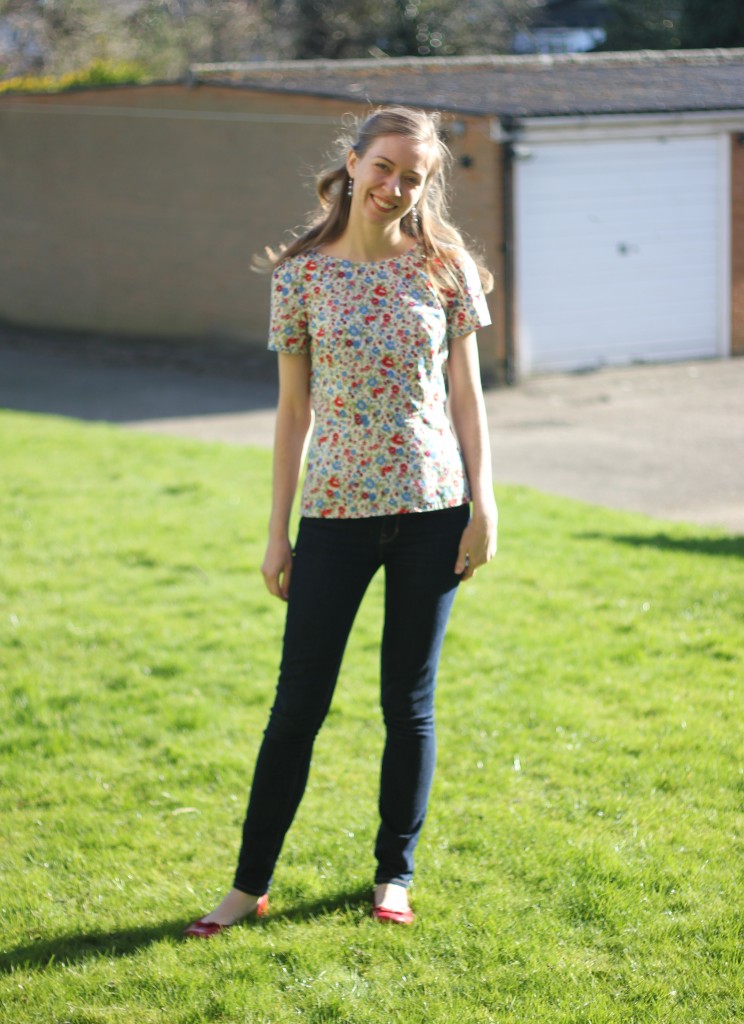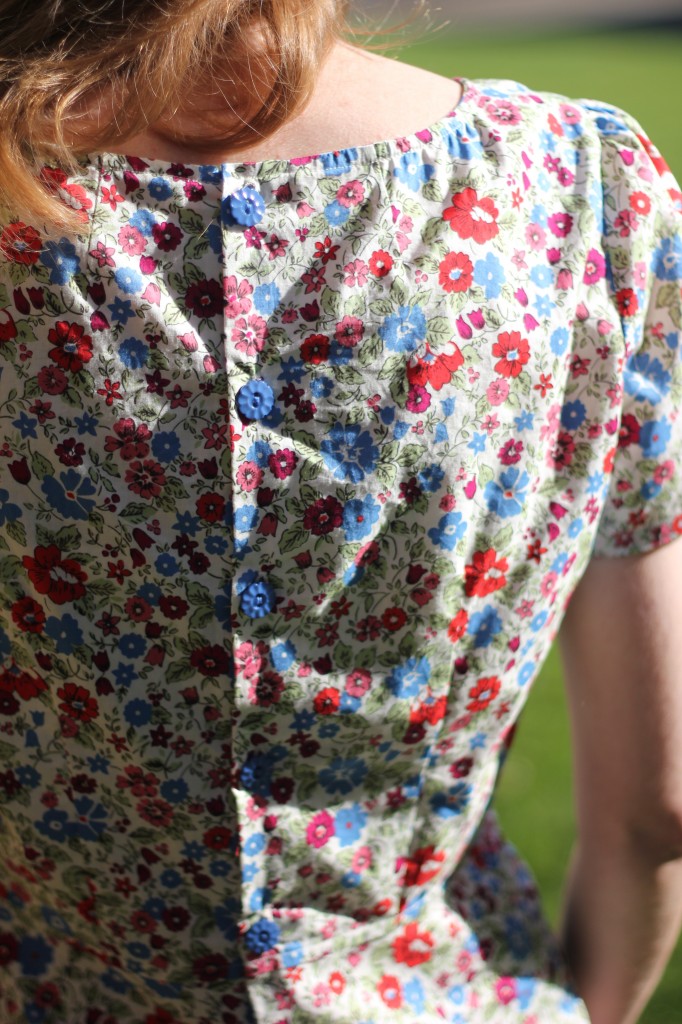I haven’t mentioned it yet, but since the new year I’ve been drafting my own sewing patterns. My mom gave me a pattern drafting book called Make Your Own Dress Patterns for Christmas, along with a fitting session to get a basic pattern fitting me well so I could use it as as a sloper (a basic pattern from which designs are made).
You know I love sewing anyway, but drafting patterns has really got me going again. I found patterns to be one of the major reasons I didn’t sew as much as I wanted: buying patterns is expensive, and even good patterns have to be fitted, a process I’ve never enjoyed. Added to that, I almost always change patterns anyway to suit whatever vision I have for the garment, and paying £10 for a new pattern only to have to make so many changes feels redundant.
It turns out that pattern drafting is not as mysterious as I thought it would be. If you have a basic sloper to start with, drafting a pattern is a matter of making systematic changes by slicing, overlapping, pivoting, and manipulating the paper pattern into a new shape. The resulting pattern does need to be fitted by making a sample version (I tend to use old sheets for this), but so far, every self-drafted pattern has already fit me better than most commercial patterns, and having drafted it myself it’s much easier to alter because I understand how its shaping works.
So I drafted a pattern for a blouse, specifically to use some cotton lawn I bought at Walthamstow Market last September. I had been saving it for a special purpose, but also had only 1 metre and thus couldn’t get more than a plain blouse out of it.
The shape of this is basically the bodice of a dress, not particularly fancy. One of the best parts about pattern drafting is the ability to problem-solve from the start, which I did in two regards. First of all, I wanted a pattern that would work to make a casual top from normal cotton fabric, but one that wasn’t a collared button-down style. Because cotton is one of the easier fabrics to find, I knew that a pattern that would work with one metre would be really useful to have – it would also make it possible to splurge on something like a Liberty cotton, which are £16 a metre and upwards but quite beautiful.
Second, I wanted to get in on the current peplum trend but in an understated way. It’s a clever style insofar as it really is just the top part of a dress, allowing some of the pretty details of a dress bodice but serving the function of a blouse. However, a lot of the peplums I see are just a bit fluffy for my taste; the extreme versions strike me as trendy rather than necessarily flattering. Just my opinion. So on my version I kept the peplum fullness minimal.
It buttons up the back, and look! I found some flower buttons that perfectly matched the design. I also did the buttonholes by hand, the first time I’ve done so – and it was not as hard as I expected, nor as time consuming. Doing one buttonhole and the corresponding button took me about 20 minutes, so if you parcel out your hand sewing in TV shows and movies as I do, that’s six episodes of a sitcom or one two-hour movie for all six buttons.
I hope you don’t think I’m overthinking this, but I’ve given this pattern a name: the Cliveden blouse. While big pattern companies normally number their pattern designs, independent designers usually give them names. Curiously, I found that as I was working on this, I needed a name for it in my head, other than ‘that peplum blouse’. I also found, far more than anything I’ve ever sewn from a purchased pattern, that I was approaching it like a piece of artwork and thinking about the sources of inspiration and the images it evoked. Specifically, because it was based on a dress bodice style and made of printed cotton, it reminded me of nineteenth century styles, like this. And it made me think of gardens, like the tulip garden we visited at Cliveden last May.
The moral of this story
I know sewing probably isn’t something most of my readers really do, so I thought I’d share something I learned from this project that could have broader relevance for even purchased clothing. This has to do with fit.
What I learned from this blouse is that good fit and tightness are not at all the same. Moreover, good fit actually obviates the need for something to be overly tight just to avoid looking boxy. In both sewing and purchasing clothing, over the years I have tended to opt for things that fit snugly because I really hate being ‘swallowed’ by my clothing. I have also stayed away from those flowing, caftan-style blouses you find in places like Monsoon, because while I like them on the hanger and on other people, I never like they particular way they drape (or don’t) on my figure. I’ve given myself a kind of complex which I notice when sewing – mere quarter inches of extra room in a garment give me the shivers, I think because I am so used to ‘extra ease’ signifying boxiness.
But since I designed this pattern from scratch, I discovered that with the appropriate amount of shaping I could have quite a bit of room to move without it looking boxy. For example, at the back there are little darts (small tucks) at the neckline, barely visible in the back view picture above, which nip the neckline in to keep it from gaping, while allowing plenty of room below for shoulder blade movement. I think this blouse looks pretty shapely, but it honestly feels as comfortable as a t-shirt because it doesn’t cling or restrict movement.
Thus, one important question I have learned to ask, when making or buying clothing, is not just, ‘Is it big/small enough?’ but rather ‘Does it have enough shaping?’



That’s really cute, I love the buttons!
I feel the same way about patterns. I made my own basic blouse pattern and modifies it here and there. It allows me to have the style I want and the fabric and print all in one blouse.